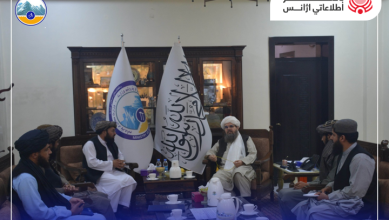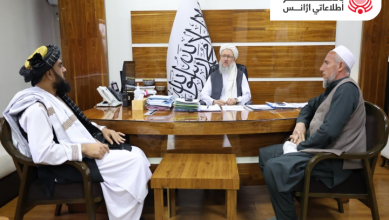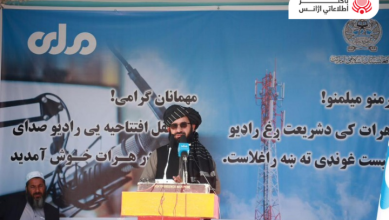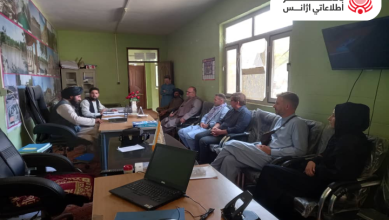
Monday, June 15, 2015
Kabul (BNA) Afghanistan is a country with thousands years rich history as historical sites and monuments, old caves like Hazar Som, Dasht-e-Navar in Ghazni, Chinar Gonjeshkan, Qara Kamar and hundreds others are a testimony to our claim.
In different provinces of Afghanistan we can find countless sites and monuments belonging to numerous historical and cultural eras with acknowledged reputation like Takht-e-Jamshed in Logar, Musallah and the Gazargah noque in Herat Jam Minaret in Ghor, Paimmarets, in Ghazni, Nohgonbad mosque in Balkh that all of them represent cultural masterpieces in different eras.
The ancient territory of Afghanistan located near the silk route and due to this reason established closed socio, economic, cultural and political relations with neighboring, regional countries of central Asia, eastern European countries.
Logar is one of the rich ancient provinces containing several historical monuments.
The historians called it as Loy Ghar that means “big mountain” and it has gradually bean named as Logar.
Located approximately 30 kg south of capital Kabul with many ancient historical manumits in Mohammad Agha, Baraki Barak, Charch, Kharwar etc. sometime legal and illegal excavations have taken place in these places by smugglers.
The ancient site of Ainak Copper mine enjoyed reputation along history from two aspects. One existence of copper mine which constitution an economic infrastructure and the second existence of ancient sites which are part of culture heritages of Afghanistan. In recent years, the ancient site of Ainak Copper mine drew the attrition of local and foreign journalists, cultural professionals and scientists.
The primary surveys of this area took place fort the first time by geologists of the former USSA in 1970s. In their reports they mentioned some issues on ancient contents of this area.
Later on French archeologists visited that area who collected scattered pieces of potteries in that area. The subsequent surveys of the said area were carried out by archeologists; of the MoIC in 2004 is result the archeologists discovered new materials like cotton, wooden boxes, spades, double ax, gypsum etc remained from smugglers. Similarly a number of pieces of cloy sculptures with gold color.
All these discovered pieces were handed over to Kabul museum. In 1388 H.S (2009) the extraction contract of Ainak Copper Mine was signed between the Ministry of Mines and Petroleum of Afghanistan and the Chines MCC Company and the MCC started its prattled studies and researches in some parts of that area.
According to primary surveys and researches and remnants of pottery places which were scattered around, on the upper parts of Ainak Mountain, these are remnants of old constructions. So the archeology department prepared on emergency plan of excavation and the first round of excavations started in Gul Hamid village in 1389 (2010) which last four months.
The excavation was going on regularly but duet to advent of cold it was delayed. The discovered pieces include body of sculpture, head of sculpture, a guard which were clay made, a number of confused copper coins, pieces of potteries, big and small vessels for keeping of foodstuff, remnants of residential buildings, worship room, painted walls which were officially handed over to Kabul museum.
The second round of excavation started in 1390 (2011) in Tapa Kafar in which one important temples was discovered.
Tons caves and tunnels excavated by smugglers attract attention of visitors.
The Kafaria hill was rich with ancient works renamed from 3rd to 7th Chiristieve centuries.
But the upcoming excitations may shed more hell include gold coins, tow silver coins, a number of copper coins, are wooden Bodhisattva sculpture, a stone sculpture that might had been brought from Kapisa to this area and was installed on a Stupa, a big clay made sculpture located on the slope of hill and its upper part was destroyed due to snow and rain in the past several years palus unique small, medium and big Stupa a painted walls that show Buddha in particular situation like education peace of mind and thinking. The moveable works were transferred to Kabul museum which the immovable works remained in the area. All there works belong to Koshanids, Koshano-Sasanids and Yeftalieds dynasty.
Other important areas include Ainak Mountain, Shah Martapa, Shah Tapa etc. in some of which excavations are going on.
Some priceless works were discovered from the abovementioned areas that include two copper plates polished with gold solution on which the picture of the Sasained ruler Shahpoor the second was engraved.
The picture is similar to the picture painted or engraved on the other players discovered in this area that showed the Sasanids domination in this area.
There are a number of potteries and which the picture of native Yaftalids rulers, animals like Deer, Horse, Stag, birds were painted or engraved. According to the discovered pieces in this area, people were living these from 3rd to 7th AD centuries.
Who might have field to eastern parts during the invasion of Arab troops.




